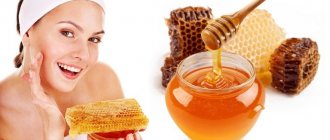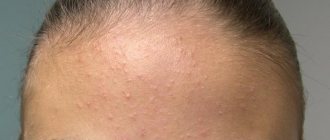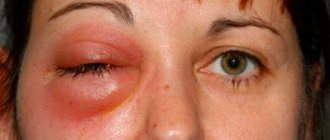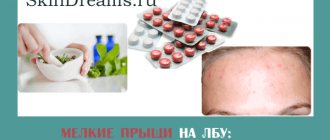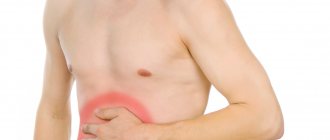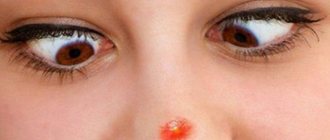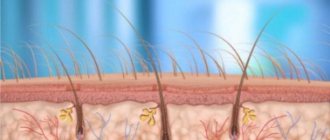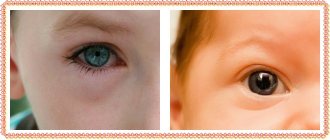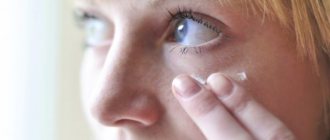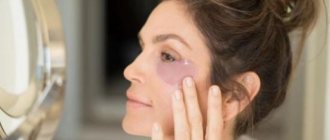Reasons for appearance
White spots under the eyes are a manifestation caused by clogging of the vellus hair follicle or sebaceous gland with keratin. It accumulates and thickens, forming whitish or yellowish lumps of a clear round shape, protruding from under the skin and hard to the touch. This problem is called milia, retention or miliary cysts or “prosyanka”.
The causes of milia are:
- lack of personal hygiene;
- use of low-quality or inappropriate care products;
- excessive use of decorative cosmetics;
- passion for chemical peeling;
- heredity;
- poor nutrition;
- burns, injuries and inflammation of the skin;
- puberty;
- oily facial skin;
- abuse of going to the solarium or exposure to the sun;
- smoking and frequent consumption of alcohol or carbonated drinks.
What not to do?
If white dots appear near the eyes, you should consult a cosmetologist or dermatologist. You should not try to remove them yourself by squeezing them out. Self-removal of white milia, if done incorrectly, will lead to scarring and inflammation. It will be much more difficult to cure them.
It is not recommended to use folk remedies without first consulting a doctor. The cause of white spots may not be due to improper functioning of the sebaceous glands. Treatment in this case is carried out in other ways.
Possible diseases
White dots under the eyes are a rash that in itself is not a disease, but is often a sign of disorders in the body. If they occur, it is recommended to check the gastrointestinal tract, liver and gallbladder, pancreas, endocrine, cardiovascular, and autonomic nervous systems.
White nodules may indicate pregnancy, hormonal imbalance, allergic reactions, the onset of menopause, vitamin A deficiency in the body, hypo- or avitaminosis, or skin diseases (porphyria cutanea tarda, bullous pemphigoid, dystrophic form of epidermolysis bullosa, tuberculous lupus, skin sarcoidosis).
They also appear against the background of oily, thick seborrhea.
White pimples (milia, prosyanka) under the eyes, on the eyelid
White bumps or clear, whitish blisters can really be a cause for concern. After all, they are a sign of some disease.
Moreover, the pathology is determined by the location and appearance of the suddenly appearing bulge. Therefore, it is important to know exactly where the white pimple is located on the eye:
- in the inner part of the eyes;
- between and under eyelashes;
- on the upper or lower eyelid;
- along the edges of the two eyelids;
- on the underside of the eyelid.
Diagnostics
No special equipment, scrapings or tests are needed for diagnosis; a dermatologist-cosmetologist recognizes millet by its characteristic external signs when examining the skin. Single dots are a rare occurrence; more often they are located in clusters, covering the eyelids, temples, cheekbones and cheeks, nose, and occasionally appear on the body.
When pressed, they do not cause pain, do not itch and are not prone to inflammation if their integrity is not violated.
You need to make sure that the white lumps are milia, and not fibrofolliculomas (dome-shaped papules that do not differ in color from healthy skin or have a yellowish tint), lipomas (wen), trichodiscomas (a scattering of small whitish papules), comedones (plugs in the sebaceous glands ), syringomas (nodules formed as a result of impaired development of sweat glands).
Or xanthelasmas on the eyelids (benign tumors that are yellowish in color and soft to the touch). Only then will the treatment be correctly selected. In public clinics, consultation can be obtained free of charge; in private clinics, prices for an appointment start on average from 400 rubles.
How to get rid of acne quickly
Only a doctor should prescribe treatment, clarifying the diagnosis.
If it turns out that there is an ordinary stye on the eye, an inflammatory process from mechanical damage, the following drugs are used:
- antibacterial drops (albucid, erythromycin, gentamicin) are instilled into the outer corner of the eye several times a day;
- antibacterial ointments (tetracycline, erythromycin) are applied to acne at night;
- drying pimples with a special alcohol solution should be done very carefully (prescribed when mites are detected);
- badyaga helps with barley.
Your doctor will prescribe a treatment regimen for ticks and allergies, measles, and chickenpox.
9 types of acne on hands and 47 treatment methods
Cosmetologists can offer removal of pimples from the eyelids by piercing it with a needle, scraping it with a curette, or burning it with a laser or electric discharge. All these operations can damage the mucous membrane of the eye. It is better not to agree to such procedures.
Attention! Only a doctor can you trust your eyes!
When to see a doctor
White spots under the eyes are such an unpleasant phenomenon that tends to get worse if you don’t fight it. The millet does not cause any harm to health or life, but it can greatly spoil the appearance.
If the occurrence of retention cysts is caused by illness, you should not delay visiting a doctor; timely treatment will prevent further complications, and getting rid of the cosmetic defect will be cheaper. It is better to entrust treatment to a dermatologist or cosmetologist; independent removal can lead to serious consequences.
Only a dermatologist or cosmetologist can properly remove white spots under the eyes.
Rashes on the face of newborns are not uncommon; they usually go away on their own after 1-3 months and do not require intervention. In adults, cysts do not disappear without treatment, since they are not able to mature and spontaneously open.
Types of acne
Barley is an infectious and inflammatory formation. The lump has a fairly dense texture, usually appears on the eyelid, and is accompanied by swelling, redness around the eye and severe pain.
With timely treatment and strengthening the immune system, you will prevent the onset of purulent abscesses and chalazions. If there is a delay in seeking medical help, surgical removal is performed.
Xanthelasma is a small, flat, yellow pimple that occurs both on the eyelid and under the eyes. It can be single or multiple. It is more common in patients with a diseased liver, metabolic disorders, and high cholesterol.
A chalazion is a round, dense nodular formation. It occurs from the accumulation of secretions due to blockage of the sebaceous ducts around the eyes, as a result of ineffective treatment of barley, or due to infection. In addition, the neoplasm may be a cyst, which requires specific treatment.
Any neoplasm should be addressed by a doctor. The ophthalmologist, after conducting a diagnosis, will find out the cause of the abscess and prescribe the necessary medicine.
Prevention
White spots under the eyes are a disorder of the body that is more susceptible to people with a genetic predisposition or oily skin. In these cases, the risk of cyst re-formation after removal is especially high.
However, no one is immune from this scourge, so even if there is no problem, you should follow the recommendations:
- Cleanse your face daily, choosing products based on your skin type. Scrub or exfoliate your skin 1-2 times a week. Sometimes wipe your face with a decoction of sage, chamomile, and string to refresh and disinfect.
- Reduce the consumption of salt, flour, sweet, smoked, fatty, spicy, fried foods, canned foods, carbonated drinks, avoid products with aromatic additives, dyes, and introduce fruits and vegetables into the daily menu.
- Limit exposure to the sun.
- Apply only high-quality decorative cosmetics, and be sure to wash them off before going to bed.
- Adopt a healthy lifestyle, stop smoking and do not abuse alcohol.
- If you have vitamin deficiency, do not neglect vitamin-mineral complexes. Vitamins A and E are especially important.
- Monitor your health and undergo regular examinations.
Don't miss the most popular article in the section: Face fitness for facelift, rejuvenation, muscle tone. Master class from Elena Karkukli
Conjunctivitis
Conjunctivitis is essentially an inflammation of the mucous membrane of the eye, which is caused by various environmental factors. There are three main types of conjunctivitis:
- allergic;
- viral;
- bacterial.
Allergic conjunctivitis occurs when the sensitive membrane of the eye is irritated by allergens:
- cosmetics;
- household chemicals;
- plant pollen;
- household and industrial dust.
The conjunctiva can become inflamed when adenoviruses and enteroviruses come into contact with it. Viral conjunctivitis accounts for 60% of all inflammations of the eye membrane.
Bacterial conjunctivitis accounts for only 15% of cases. The most common causes of the disease are chlamydia, gonococci, E. coli, and staphylococci. The process is aggravated by the attachment of fungi to the bacterial flora.
Treatment methods
In order not to harm yourself, you should contact a specialist with the problem. It’s not enough to get rid of white rashes; you need to follow your doctor’s instructions to avoid worsening or recurrence of the problem. Self-medication takes longer and does not always guarantee positive results.
Medications
All products are applied to cleansed skin. They help fight millet:
- Boric or salicylic alcohol (costs around 20 rubles) – they should be used to wipe each nodule point by point in the morning and evening. Healthy skin should not be touched to avoid drying it out. If an acid solution is used instead of alcohol, it should be 1% so as not to cause a burn. Noticeable improvements should appear within 10 days.
- Vishnevsky ointment (costs about 50 rubles) - squeeze a little onto a piece of cotton wool, apply to the affected area, secure with a band-aid and leave overnight. After several procedures, the “grains” should soften and can be gently squeezed out.
- Lipobase (260 rubles), Emolium (600), Retinoic ointment (300 rubles) - require spot application on the nodules themselves twice a day. Apply until the effect becomes obvious.
The duration of the course of treatment depends on the size of the rash; the more there are, the longer the recovery will take.
The advantage of folk remedies is their availability, among the disadvantages:
- Medicines are useless if milia are deep.
- The course of treatment can last several months, but does not guarantee the disappearance of all nodules.
- The products may cause irritation or an allergic reaction; in these cases, the drug should be stopped immediately.
After removing whiteheads, it is worth making masks from bodyaga; thanks to them, the wounds will heal faster and inflammation will go away. If the inflammatory process cannot be avoided, ichthyol compresses are used. Apply ichthyol ointment to a cotton pad, apply to the affected skin and secure with a band-aid. If possible, keep the compress for a day, renewing the medicine every 8-10 hours.
Improvements should be obvious after the first application.
Aspirin also has an anti-inflammatory, drying and healing effect. Crush 10 tablets, add 2-3 tbsp. warm water, stir. For better results, you can add a little liquid honey. Apply this paste to problem areas and leave for 5-10 minutes. Repeat 1, maximum 2 times a week.
https://youtu.be/u_m4PBt3ND4
Traditional methods
Medicines can be prepared with your own hands from natural raw materials. They should be used until the millet is completely eliminated. But you need to be prepared for the fact that the treatment will be long, it will take at least a month.
List of traditional methods:
- Lotion . Wash a few aloe leaves thoroughly, squeeze out the juice and mix it with 1 tbsp. alcohol Wipe the cysts with the resulting liquid before going to bed.
- Masks. When treating milia, daily use is recommended; as a preventive measure, once a week is sufficient. Viburnum: crush a handful of fresh berries with a wooden spoon, squeeze out the juice, add oatmeal, crushed with a blender, into it. Apply the paste to the white spots and leave for 45 minutes, then rinse with cool water. Cucumber. Remove the skin and seeds of one cucumber, finely chop or grate the pulp. Pour hot water, leave for at least 4 hours, wrapping the container for slow cooling. To apply the mask, you need to cut a mask from a small piece of linen or cotton with holes for the lips and eyes, moisten it in cucumber water and apply it to the face for 20-30 minutes. Paraffin. Melt the paraffin in a water bath, stirring, cool slightly, not allowing it to harden. Apply with a brush to milia and let dry, apply 2 more layers. After 20 min. remove carefully. Paraffin is contraindicated only for those who suffer from spider veins and overly sensitive skin. Milk-gelatin film mask: mix 1 tbsp. l. gelatin and milk, heat in the microwave until the gelatin dissolves, 10-15 seconds. Apply with a brush to problem areas. Wait until dry, remove. Wipe the skin with lotion. Spread half a peeled onion with honey and bake in the oven for half an hour at 100°C, crush. Apply the mixture to the affected areas in the mornings and evenings, leave for a quarter of an hour, rinse with warm water.
- Oil . Chop a small piece of propolis well and add sunflower oil. Leave for 3 days in a cool place. Treat whiteheads every morning. You can mix castor oil with tea tree oil. Treat the nodules with the mixture morning and evening.
- Scrub . Grind oatmeal with a blender, but not into flour, add 1 tsp honey to soften. baking soda and fine table salt. Apply with smooth movements along massage lines onto damp facial skin for 2 minutes. Rinse off with warm water.
- Soda peeling . Lather baby soap and apply to face. Pour baking soda onto a cotton pad. Massage your face with it for 3 minutes. Rinse off with cool water. Apply a light moisturizer.
Other methods
The most effective methods are those carried out by professionals in beauty salons.
| Way | Description of the procedure | Duration and frequency | Advantages and disadvantages | average cost |
| Electro-coagulation | Problem areas are excised with a metal loop of an electro-coagulator, heated under the influence of a constant high-frequency electric current. After the procedure, antiseptic treatment with a 5% potassium permanganate solution or chlorhexidine is required for 10 days. | Cysts can be removed in one session. This takes 10-15 minutes. | The method is famous for its simplicity, low traumatism due to point cauterization, and high efficiency. The pulses are able to penetrate into the deep layers of the skin. After the session, slight swelling and pain remain in the affected areas, which disappear after a few hours, and dense crusts appear, they disappear on their own. The main disadvantage of electro-coagulation is the likelihood of residual scars appearing. There are contraindications:
| From 70 rub. for one milium. |
| Laser | Exposure to a CO-2 (carbon dioxide) laser allows layer-by-layer clearing of rashes from any area of the face through thermal effects. Suitable for large areas affected by cysts, as well as when they are located too close to the eyes. | In one or two procedures, which last from 10 to 20 minutes, you can completely get rid of milia. | The method is painless and does not damage healthy skin. In addition to effective cleansing, it provides a bactericidal effect. After its use, there is no redness or suppuration. Laser coagulation has the highest cost among hardware methods. | From 100 rub. for each milia on the face and from 200 rubles. on centuries. |
| Mechanical cleaning | On steamed skin, the master removes millet stains using sterile instruments - a Vidal needle and a Uno spoon. | In one procedure, it is possible to remove only 10-15 milia, after which a break of several days is needed. Treatment may take a long period. | This is the most traumatic way. At the site of each removed formation, a small wound remains, which heals quickly. The advantage is the low cost of the procedure. Mechanical removal is not suitable for people with thin or overly sensitive skin and if white spots are located on the eyelids very close to the roots of the eyelashes. | From 50 rub. for one milium. |
If the milia are located close to the surface of the skin, a bath will help. The washed face should be thoroughly steamed and lightly patted with a birch or oak broom. After this, wipe your face and hands with alcohol and carefully squeeze out the blackheads. If the contents do not come out, there is no need to press harder; it is better to postpone the attempt until next time.
Don't miss the most popular article in the section: Facial massage according to the system of the Japanese doctor Asahi Zogan.
Possible complications
After eliminating a cosmetic defect, the skin needs restoration. After 4 days, it’s time to make this mask: mix 25 g of yeast with 1 tbsp. l. liquid natural honey, lemon juice and hydrogen peroxide (3%) until smooth. Keep the mask on your face for half an hour. Carry out the procedure twice a week.
If there are rashes around the eyes, you should not squeeze or pierce them at home, this is fraught with complications:
- Causing pain.
- Inflammation of wounds.
- After healing, scars will remain.
- Delicate skin is easily injured.
- Allergic reactions are possible when using traditional medicine without consulting a dermatologist.
Whiteheads are characterized by non-inflamed heads due to the fact that their contents are hidden under the skin and have no contact with the external environment. If left undisturbed, they rarely increase in size. If you puncture a miliary cyst yourself, there is a risk of introducing microorganisms into it, which will provoke inflammation with the appearance of an abscess. In this case, ointment with Erythromycin will help.
After mechanical removal, it is undesirable to use decorative cosmetics for 2-3 days.
Milia can appear at any age. White dots under the eyes are a nuisance that can affect self-esteem and cause complexes, so it is advisable to get rid of them in a timely manner. To avoid relapse, avoid stressful situations, monitor your appearance, nutrition and health.
Author: Liliya Razzhivina (Meerjungfrau)
Article design: Oleg Lozinsky
Additional products to eliminate skin allergies:
- Nagipol - (price 80 rubles) brewer's yeast in tablets or any brewer's yeast with zinc, they help improve the condition of the skin in general.
- Herbal lotions - to soothe the skin and reduce allergies under the eyes, you can apply cotton pads soaked in infusions of chamomile, sage, and string to the area of the allergic lesion. To prepare the infusion: pour 1 tablespoon of medicinal herb with a glass of boiling water, let it brew for 30 minutes. Then soak cotton pads in the infusion and apply to the eyelids, every 2-3 minutes additionally moisten the pads and continue for 20 minutes.
If allergic conjunctivitis is added to the skin allergy, then eye drops for conjunctivitis should also be used. Eye drops for allergies are prescribed only by a doctor.
- Opatanol - in the composition of olopatadine, 380-420 rubles.
- Allergodil - contains azelastine, price 310-330 rubles.
- Cromohexal - disodium salt, price 100 rubles.
- Lecrolin - cromoglycic acid, price 120-135 rubles.
Most often, allergies to the skin around the eyes are caused by cosmetics that contain protein molecules, phospholipids or polysaccharides, as well as combinations thereof. This can be mascara, cream, nail polish and even powder. New cosmetics always need to be tested; to do this, apply the cosmetic product to the skin of the forearm, wait for a reaction for 10 minutes, and only then apply it to the face.
